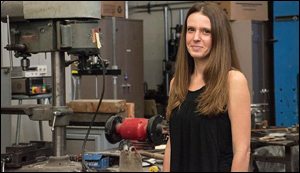Making Cement Sustainable
17. 10. 2018 | UC Davis | www.ucdavis.edu
Cement production accounts for up to nine percent of global anthropogenic carbon dioxide emissions, according to the World Business Council for Sustainable Development. Sabbie Miller, assistant professor in the Department of Civil and Environmental Engineering, aims to change that by finding alternative ways to make cement or replace it altogether.
People have been using cement as a building material for thousands of years. Mixed with water and rock fragments, it forms concrete for buildings, highways and bridges. Making cement involves heating limestone and clay to 1450°C (2640°F), which both consumes energy and releases carbon dioxide. The process also requires large amounts of fresh water. Yet the reason cement plays such a major role in carbon dioxide emissions comes down to the sheer amount of concrete being poured worldwide.

Miller, who serves on the sustainability committee of the American Concrete Institute, focuses her research on three areas: Alternative materials to conventional cement, ways to replace or reduce the amount of cement in concrete, and engineering approaches that target desired mitigation strategies for reducing environmental impacts of cement and concrete.
Read more at UC Davis
Image Credit: Reeta Asmai, UC Davis
-jk-




